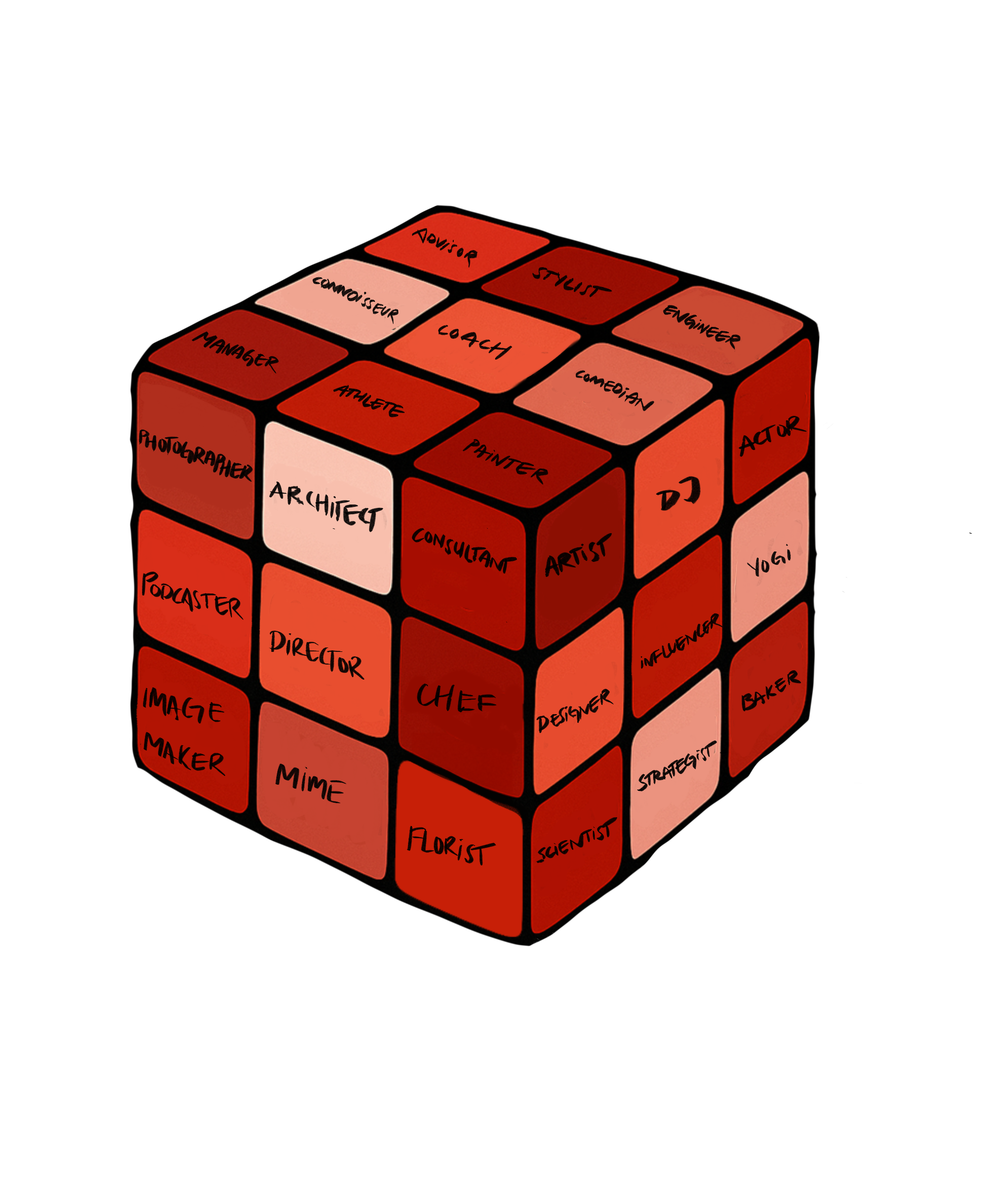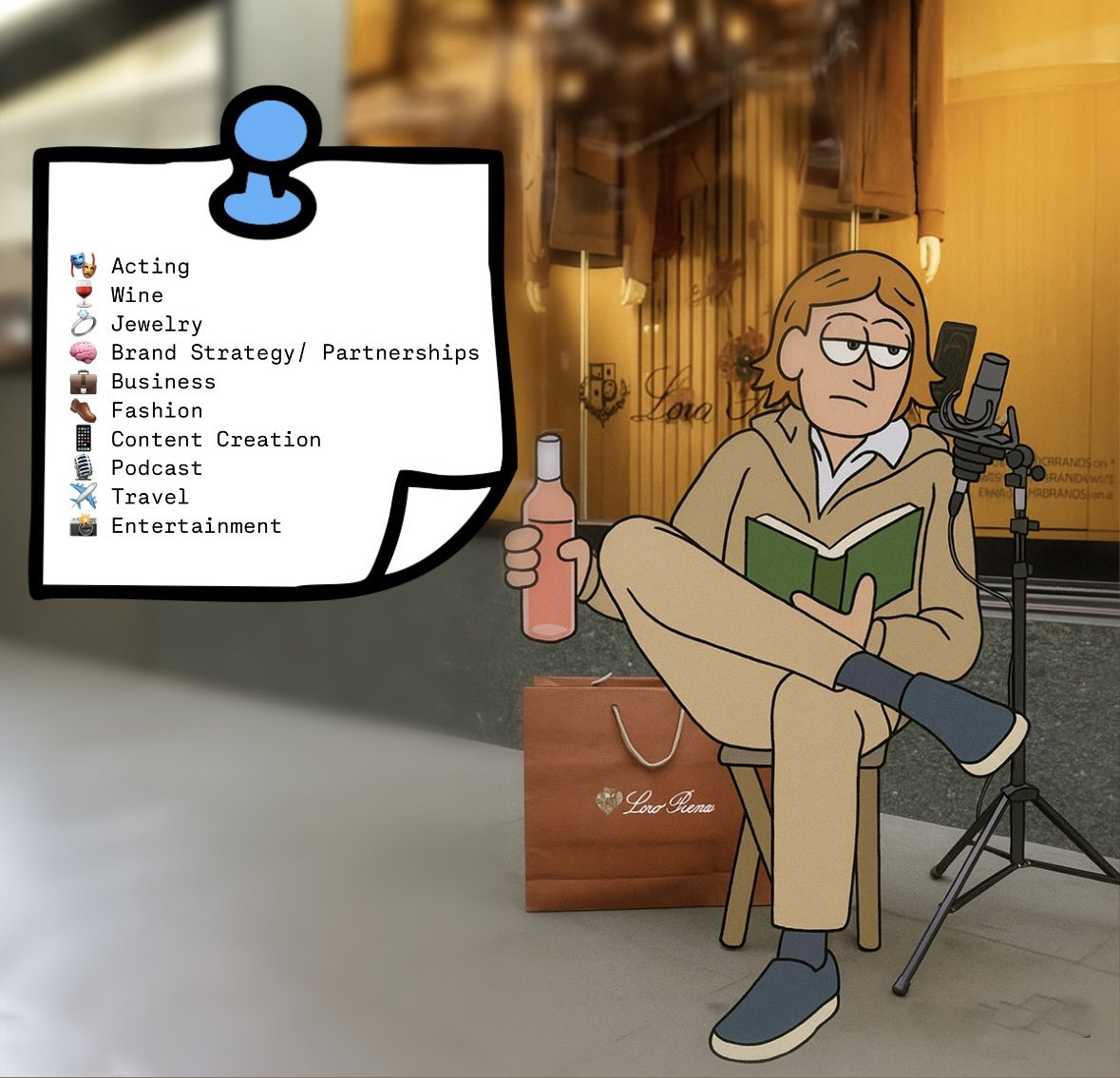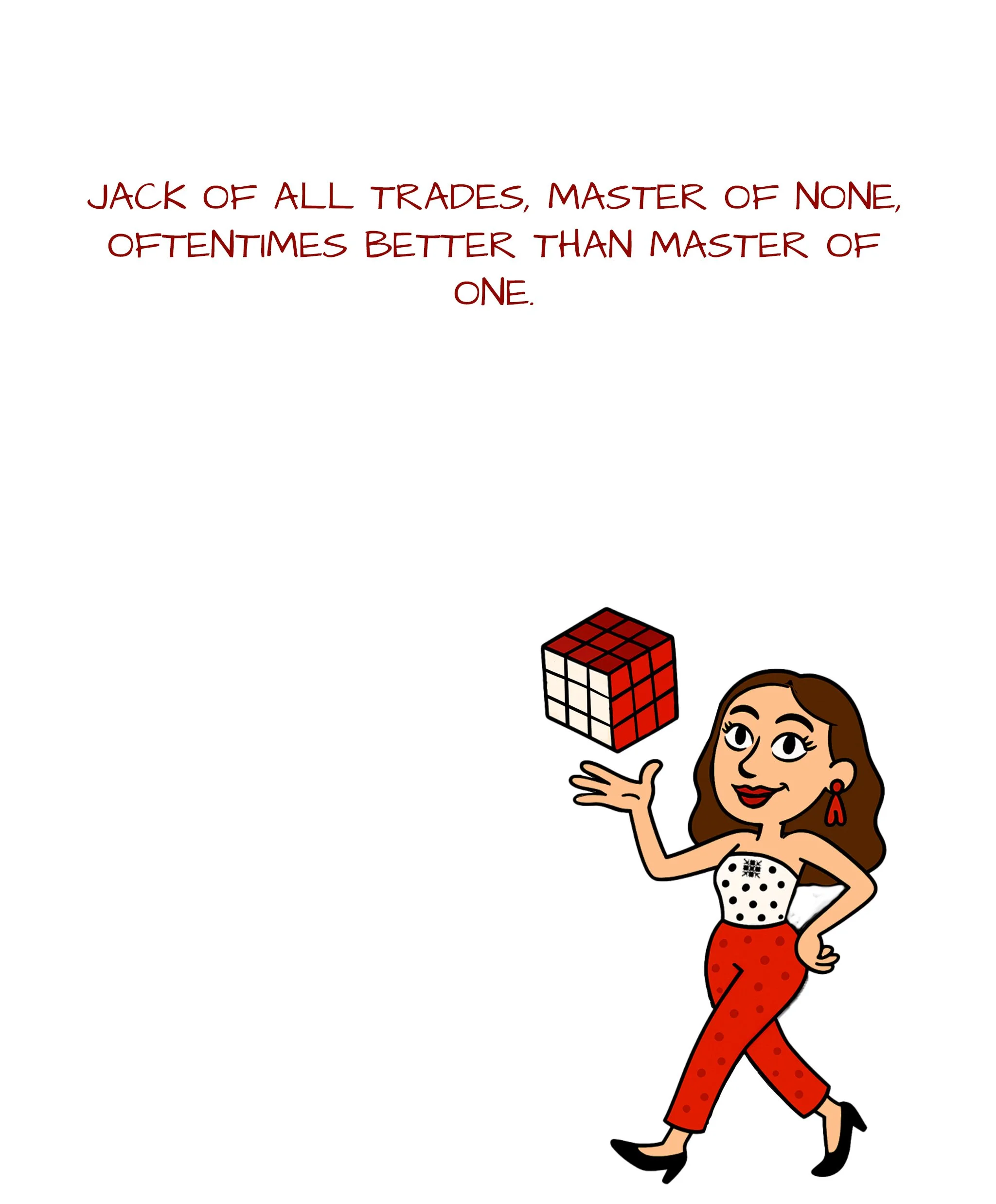“Creative multi - Hyphenate”
Today I wanted to share a few creators who genuinely inspire me.
Not necessarily designers, but there’s an art to how they do what they do.
It’s not just what they make and share, it’s how they’ve shaped their own creative lanes.
I’ve realized I’m drawn to people who move through multiple spaces at once..
Strategy, storytelling, business, content, presence…
That multi-hyphenate energy where the medium is as much them as it is the work.
And at some point, that shift became cultural currency.
In my opinion, it already happened. It wasn’t a what. It was a who. Virgil Abloh.
What followed was a recalibration. Everyone seems to be a brand now. Everyone a creative director. Everyone creating their own title. The multi-hyphenate. The merch drop. The brand deck. The “slash.”
This isn’t a critique. You will find my ig bio unironically ironically is a set out dashes.
I follow and admire many who do just that. I find value, entertainment, and real inspiration in their work. And I would like to share some who I’ve followed for a while, that different as they are- operate in their own unique axis. People like Joe Holder, The Stanza (Nadine), and Gstaad Guy. What they share, how they refine their voice, how they evolve their value in public view... I really enjoy and learn from it.
Joe Holder makes wellness feel light, thoughtful, and actually fun. His view on movement, the mind-body connection, the idea of simply showing up, there’s clarity in it. And his stories? Self-motivation clips, edited like moodboards. I screenshot so many. Even when I don’t move, I feel seen. Sometimes I do an exercise snack just from tapping through. (P.S. I follow him from my personal account, in case he sees this and wonders why I don’t follow. )
Gstaad Guy, for the humor the anthropological satire, but also not just for the Hannah Montana. For me, it’s the Miley Stewart behind it. What started as a parody turned into a full creative ecosystem. Characters. Wine. Jewelry. A podcast. It’s consistent, strategic, attuned. The balance of satire, mockery, and praise- he knows exactly what he’s doing.- And apparently, Virgil told him he was a kind of modern-day Robin Leach, which pushed him to leave his tech job and go all in. It shows.
Nadine (The Stanza) gives me a window into a version of Milan I sometimes miss. I love the way she delivers information, composed, clear, with just enough edge. Her work feels deeply considered. After transitioning out of private equity, she now focuses on the business of hospitality, fashion, and luxury, topics she covers with structure and point of view. Her green screen TikToks, her Substack subscription, the podcast- I follow the formats and the voice. She hasn’t directly cited Virgil, but her shift and self-invention carries that same spirit. Naming your own role, arranging your own flowers, seeing what blooms. I really admire it.
All three of them, in their own way, I feel have a Virgil influence. Joe often says Virgil freed the game of creative production, and that he hopes to do the same with the art of movement. Gstaad Guy attributes the start of his public persona to that one moment of encouragement. And Nadine, whether knowingly or not, channels a similar independence.
Virgil to me was always more than a designer. He was the example of someone who started with a foundational architecture degree- not to become an architect in the conventional sense, but to build ideas. He understood structure. And then he started to remix and play: album covers, installations, stages, fashion, Off-White, Louis Vuitton. He was an architect of thought.
Off-White Store in Milano Dec 2021- stores around the world had flower installation in Abloh’s memory.
I think a lot about what "creative director" meant ten or fifteen years ago. Back then, it was the highest creative title in a company, earned through exposure to every part of the process. You didn’t start as one. You became one. Now, it’s an Instagram bio line. A self-given label. Not wrong. Just… different.
Abloh inspired and created frameworks. He gave permission to take yourself seriously and playfully. Not through gatekeeping, but through openness. That ethos resonated with me before I had the language for it.
Years ago, a client asked me what I do. I said, "Anything! just tell me what you need." I thought I was being generous. But it made me unreadable.
I used to hate the expression "jack of all trades, master of none”- especially when it came from teachers or co-workers.
Until I learned the full line: "...but oftentimes better than master of one."
That clicked.
It’s about seeing the whole, dreaming the wide vision, then drawing in the details. I’ve never wanted to be at the mercy of tools. It was never about being the best technician, it was about knowing what to make, and why.
These aren’t just reference points. They’re reminders of how deep the range can go. Because despite the wave of creative generalism we’re still in- and I do think we’re still in it- there’s always discourse about specificity. About niches. About being known for one thing.
But I don’t think the point is to pick a lane. The point is to be able to read the map. And that’s what I admire most about the people I mentioned. They connect the dots and they know their axis.
So maybe that old phrase isn’t so dismissive after all.
Jack of all trades, master of none, oftentimes better than master of one.








